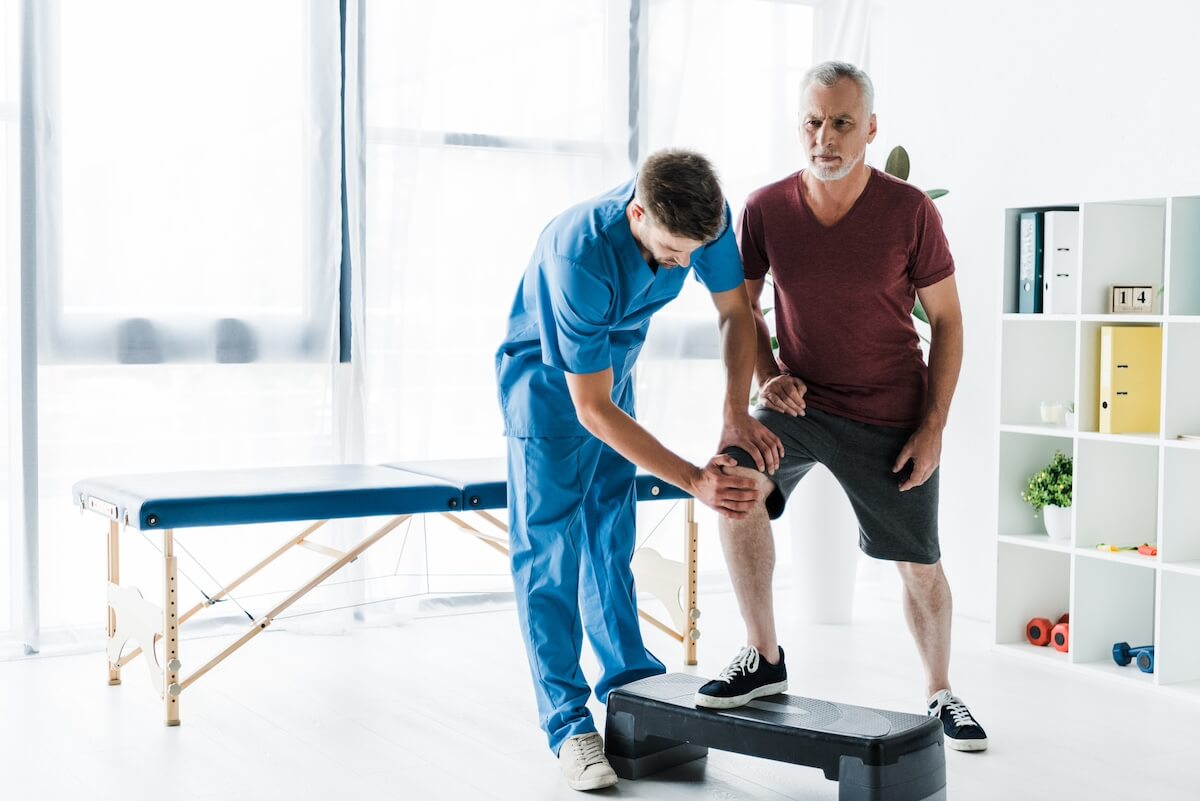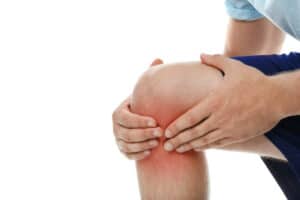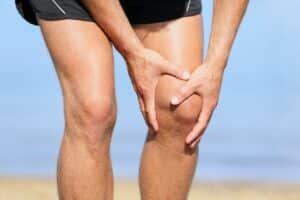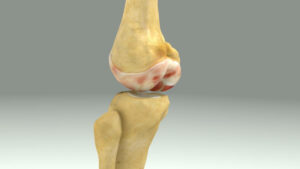Free download: Top 10 Natural & Easy Remedies for Joint Pain from Home. Learn these helpful remedies.
Estimated Reading Time: 6 minutes read
Knee health is vital for everyone, from athletes to individuals leading a sedentary lifestyle. Strong knee ligaments are essential for mobility, stability, and overall joint health. This article focuses on knee ligament strengthening exercises that can help improve knee strength and prevent injuries. Emphasizing simple, accessible exercises, we aim to guide you through routines that strengthen your knees, ensuring they remain robust and flexible.
Table of Contents
Causes and Symptoms of Weak Knee Ligaments
Before we discuss strengthening exercises, it’s crucial to recognize the causes and symptoms of weak knee ligaments. Identifying these early can help prevent further damage and help you choose the right exercises.
Causes:
- Overuse: Repeated stress on the knee ligaments can lead to wear and tear.
- Injury: Acute injuries from falls, sports, or accidents can weaken ligaments.
- Lack of Exercise: Insufficient muscle strength can put extra pressure on knee ligaments.
- Aging: Natural wear and tear over time can weaken the ligaments.
- Obesity: Extra body weight increases stress on knee ligaments.
- Poor Posture: Incorrect alignment can strain the knee ligaments.
Symptoms:
- Pain: A common indicator of ligament issues, especially when moving.
- Swelling: Inflammation around the knee area.
- Instability: A feeling of the knee giving way.
- Stiffness: Difficulty in bending or straightening the knee.
- Popping Sounds: Noises from the knee joint during movement.
- Reduced Mobility: Limitation in the range of motion.
Understanding these causes and symptoms is the first step toward taking action. Strengthening the knee ligaments through specific exercises can mitigate these issues and improve knee health.
Essential Knee Ligament Strengthening Exercises
Strengthening your knee ligaments is crucial for preventing injuries and maintaining knee health. Here are some exercises designed to strengthen your knees.
1. Quad Sets
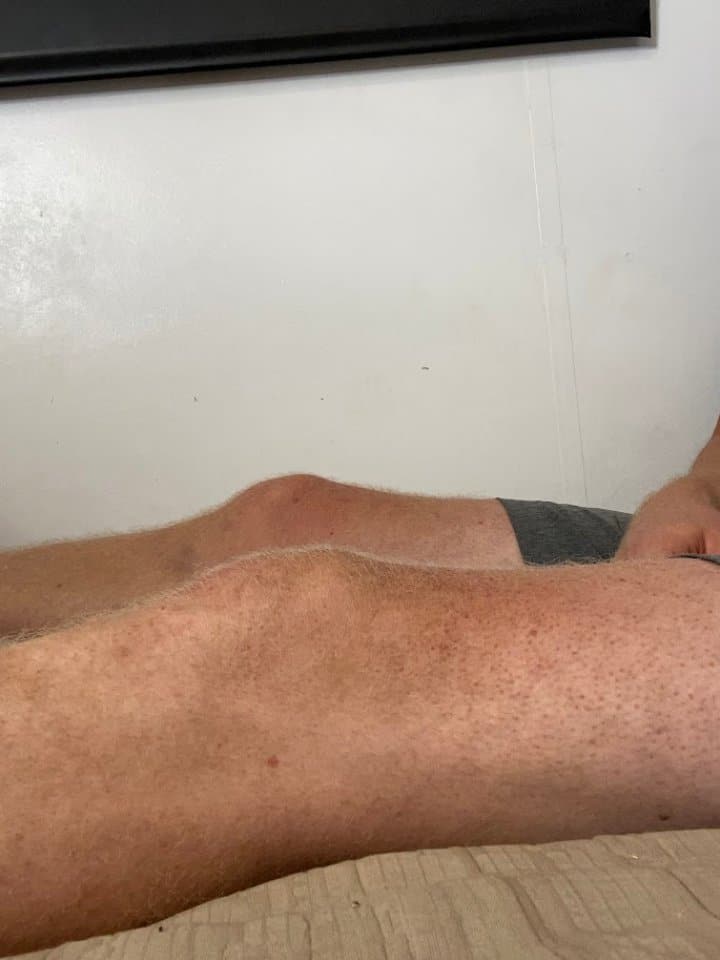
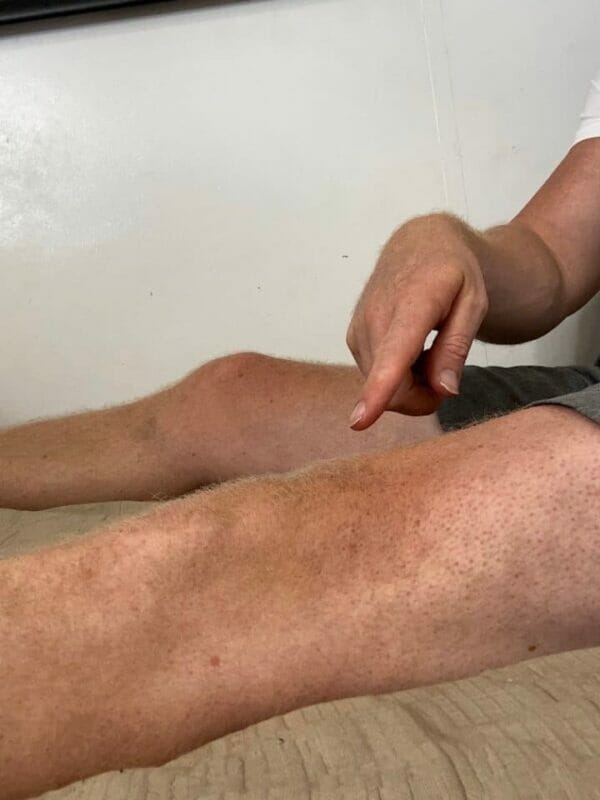
- Starting position: Seated with the injured leg stretched in front of you (can be on the floor, couch, or bed).
- Squeeze the quadriceps (the muscles on the top of the thigh) and try to press the back of the injured knee down toward the surface.
- Hold for 5 seconds, then relax.
- Repeat 10 repetitions for 3 sets.
2. Long Arc Quad
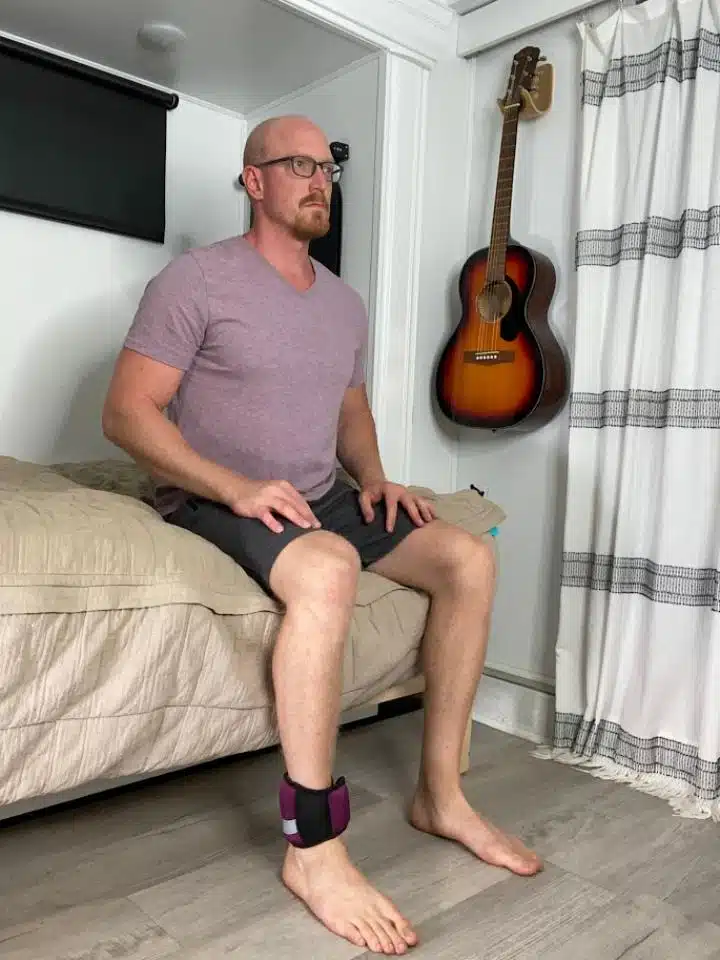
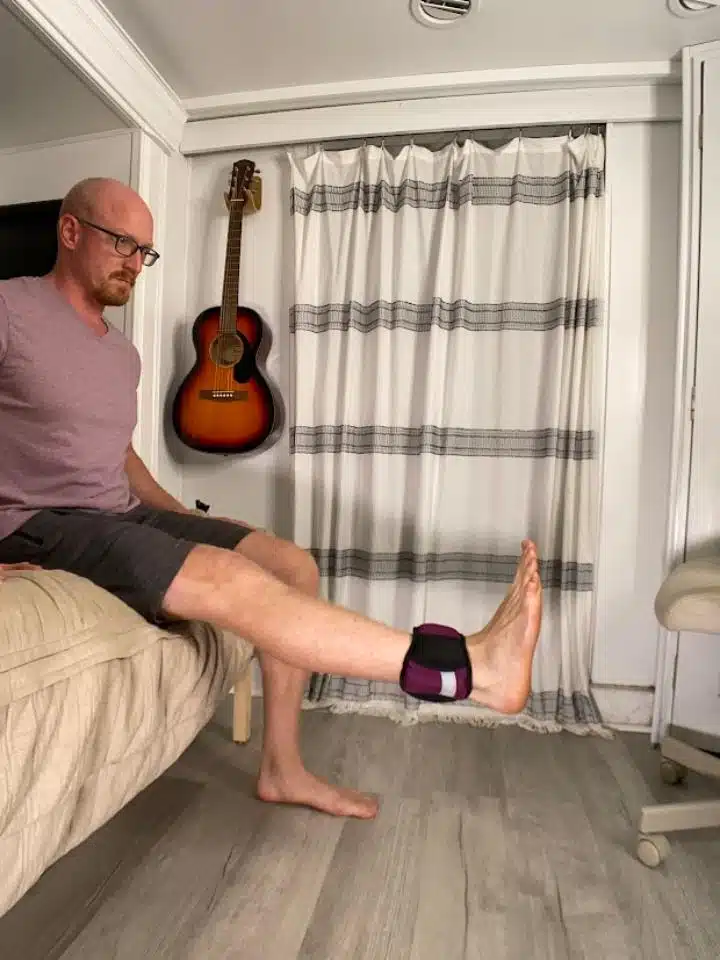
- You can perform this at home using an ankle weight (2-5 lb., as tolerated) or a resistance band tied around the ankles (light, medium, or heavy resistance).
- Begin seated in a chair with the feet flat on the floor.
- Kick the foot up off the floor and allow the knee to straighten fully.
- Hold for 2 seconds, then slowly return to your starting position.
- Repeat 10-15 repetitions for 2 sets.
- Perform on the opposite leg for even symmetry.
3. Straight Leg Raise
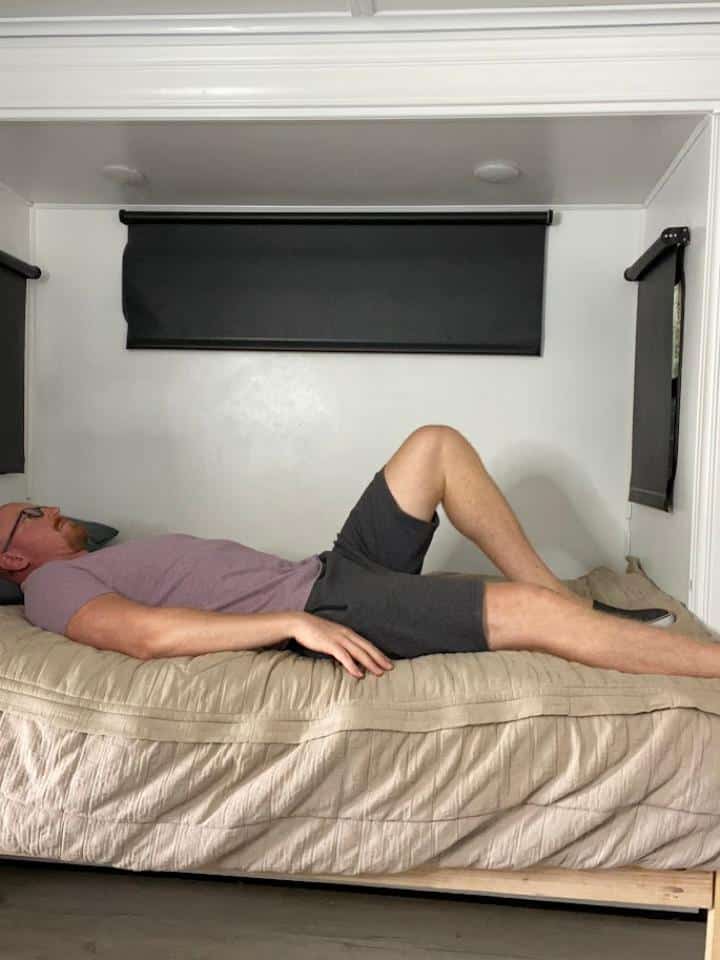
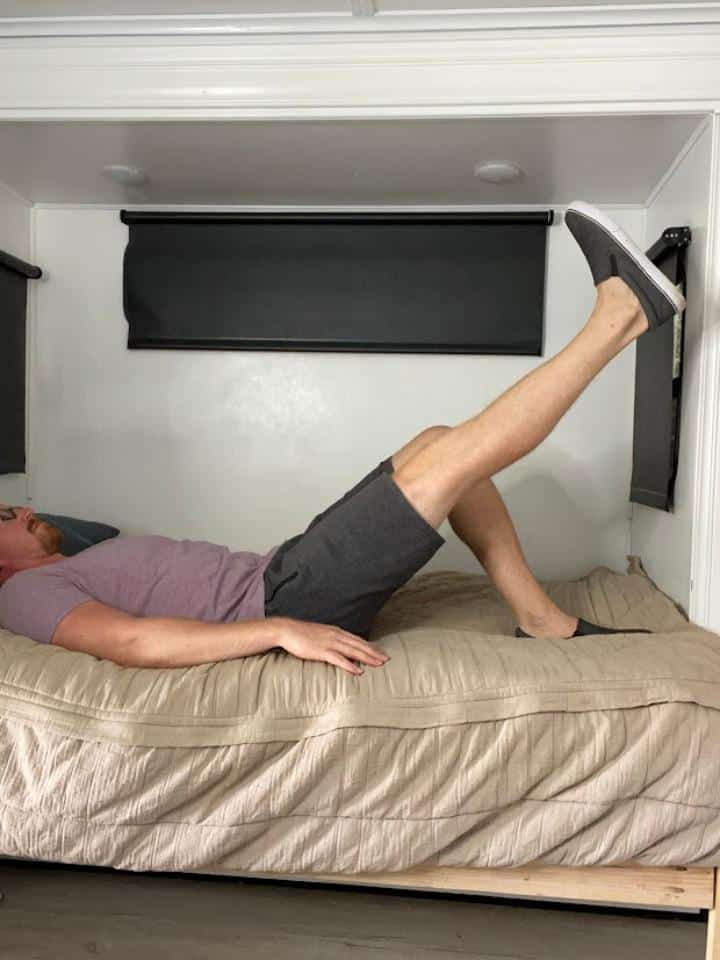
- Starting position: Laying flat on your back with the injured leg straight in front of you and the healthy knee bent with the foot flat on the surface (can lay on the floor, couch, or bed).
- Squeeze the quadriceps, just like in the quad set.
- Hold this squeeze, keeping the knee straight, and lift the entire injured leg in one motion off the surface. Lift the leg until the thighs are at an equal height with each other.
- Lower and return to your starting position.
- Repeat 10 repetitions for 3 sets.
4. Terminal Knee Extension
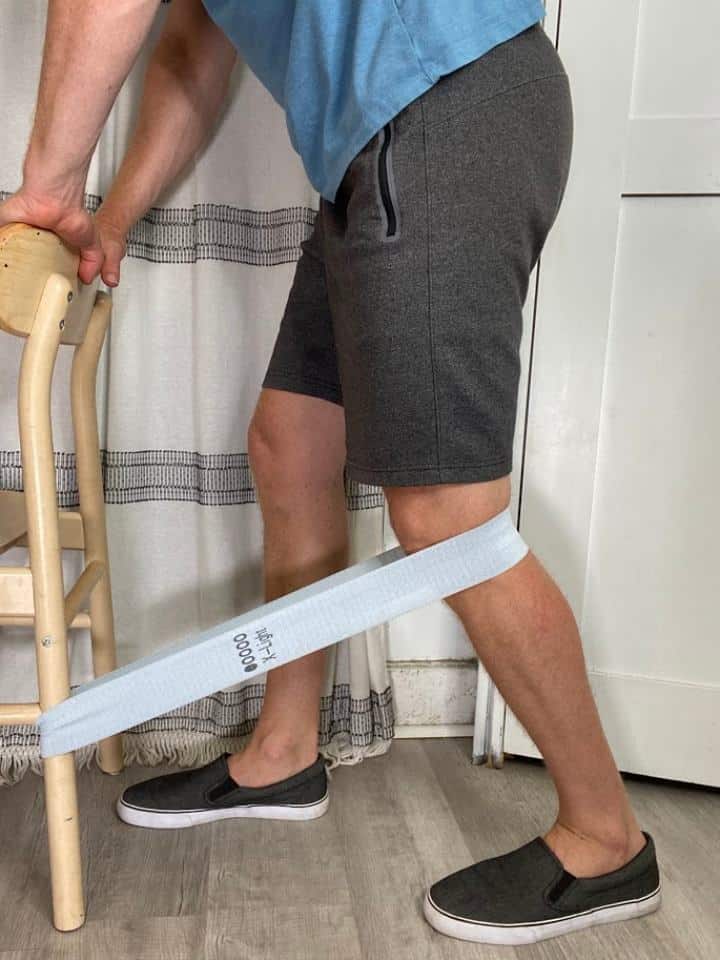
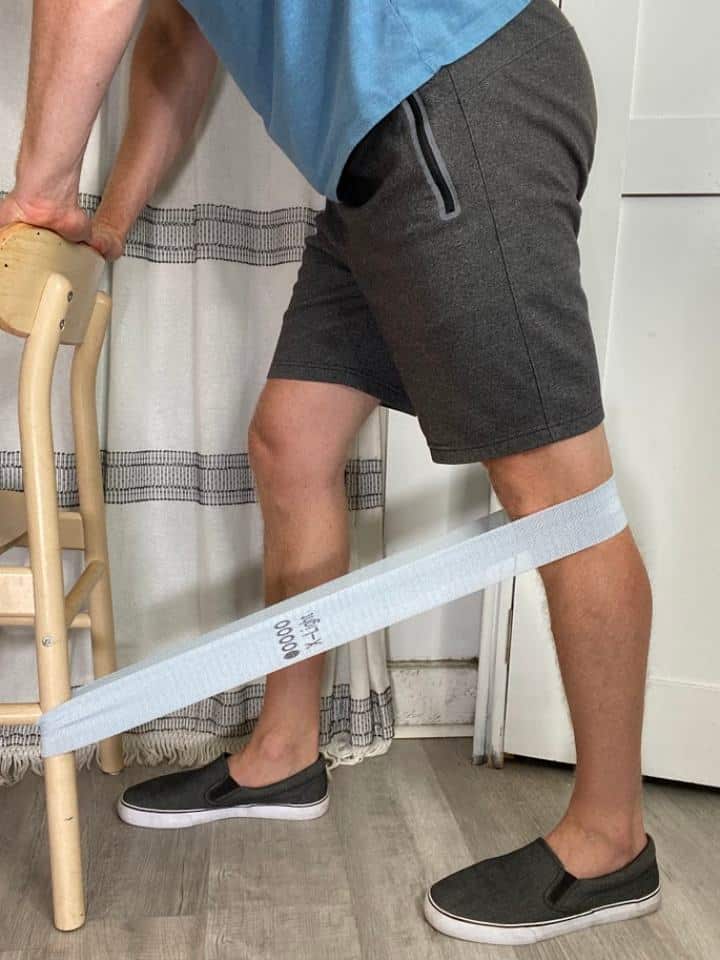
- Attach a resistance band (light, medium, or heavy) to something sturdy, such as a chair leg. The band should be tied so that you create a loop to step into.
- Step into the loop with the injured leg, and position the band so that it’s resting against the back of the knee.
- Stand with the feet side by side, but the knee with the injury will be slightly bent.
- Slowly extend or straighten the knee with the MCL tear. Hold for 5 seconds, then return to your starting position.
- Repeat 10 repetitions for 3 sets.
5. Lying Side Leg Raise
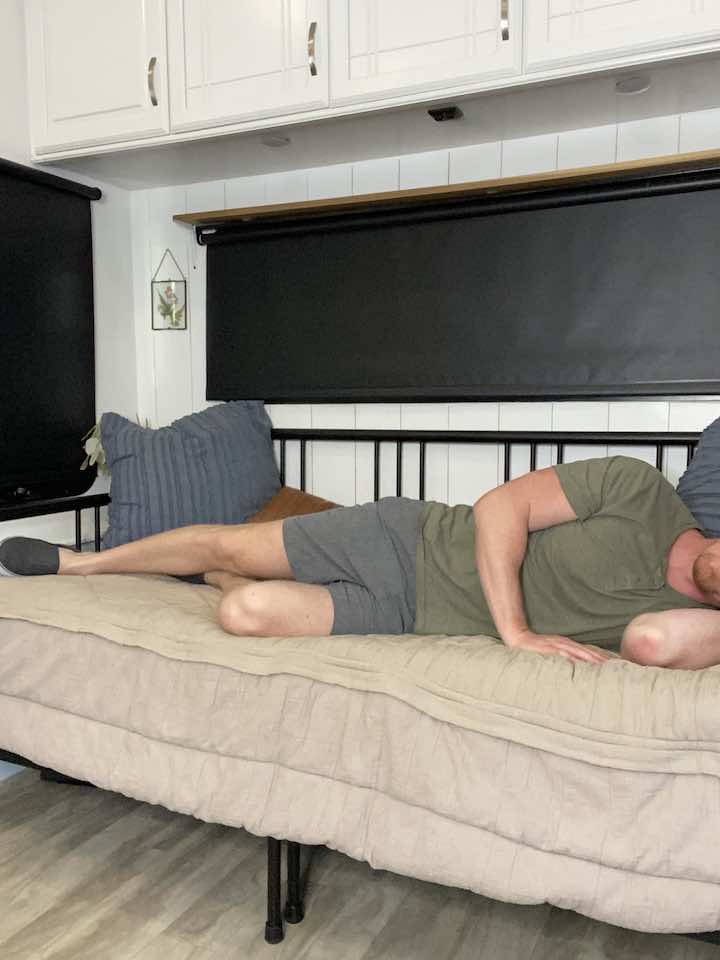
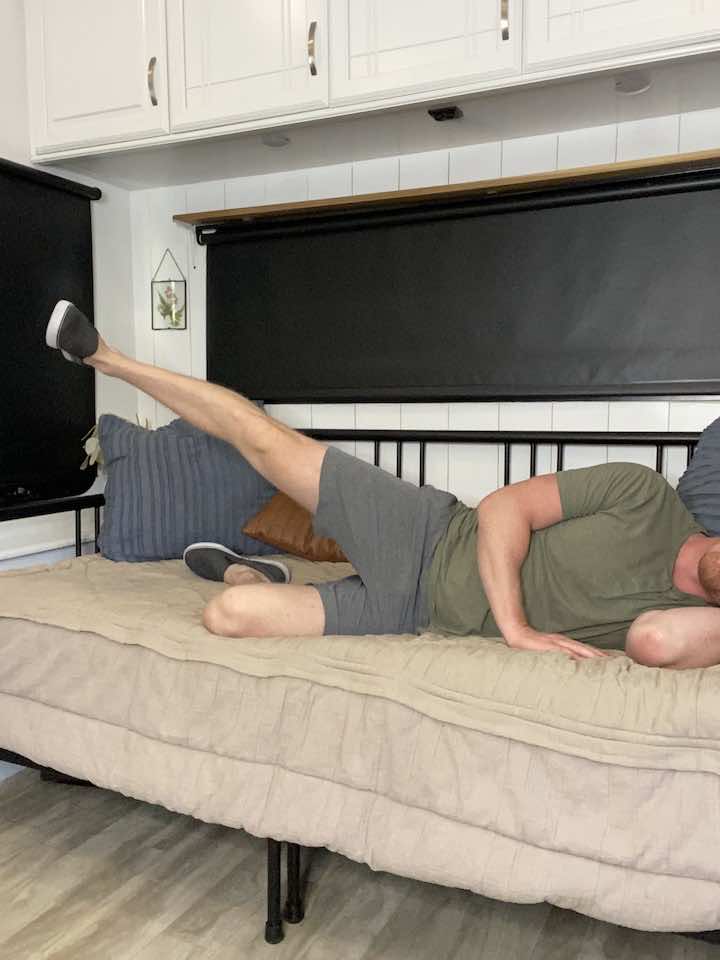
- Lie on your side with legs bent at a 90-degree angle
- Keep your feet and spine in line and your core tight
- Slowly raise the top leg to hip level
- Lower your leg back to starting position.
- Then repeat for 10-15 repetitions, 2-3 times a day.
6. Clamshells

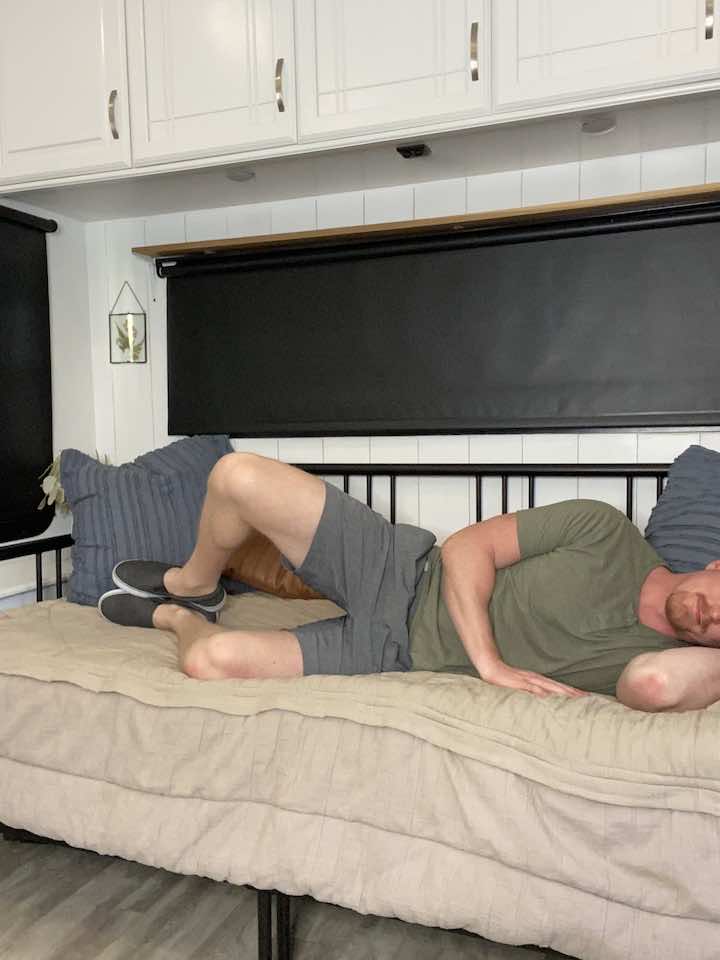
- Start by paying on your side with both knees bent.
- Keep your feet in contact with each other, and then rotate your top leg up.
- Make sure you keep your spine in alignment and your hips don’t rock back! Rule of thumb is to do a smaller range of motion if you think your back is moving.
- Rotate your top leg back down to the starting position.
- Do this 10 times for one set, and complete 3 sets.
7. Standing Hamstring Curls
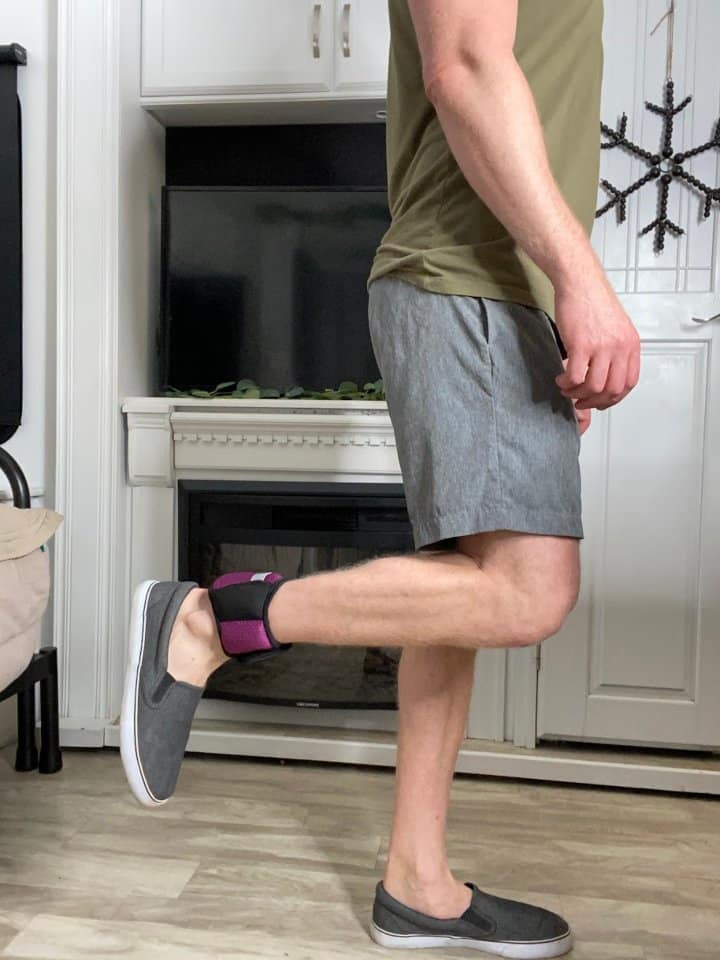
- You can use 2-3 lb ankle weights or tie a resistance band around the ankles.
- Stand in front of a sturdy surface, such as a countertop.
- Bend one knee, allowing the foot to kick up towards the bottom.
- Make sure the thighs remain close together.
- Return to your starting position. Repeat 10 repetitions for 3 sets.
- Practice on both legs.
As you progress and feel stronger, consider incorporating more challenging exercises into your routine:
8. Squats
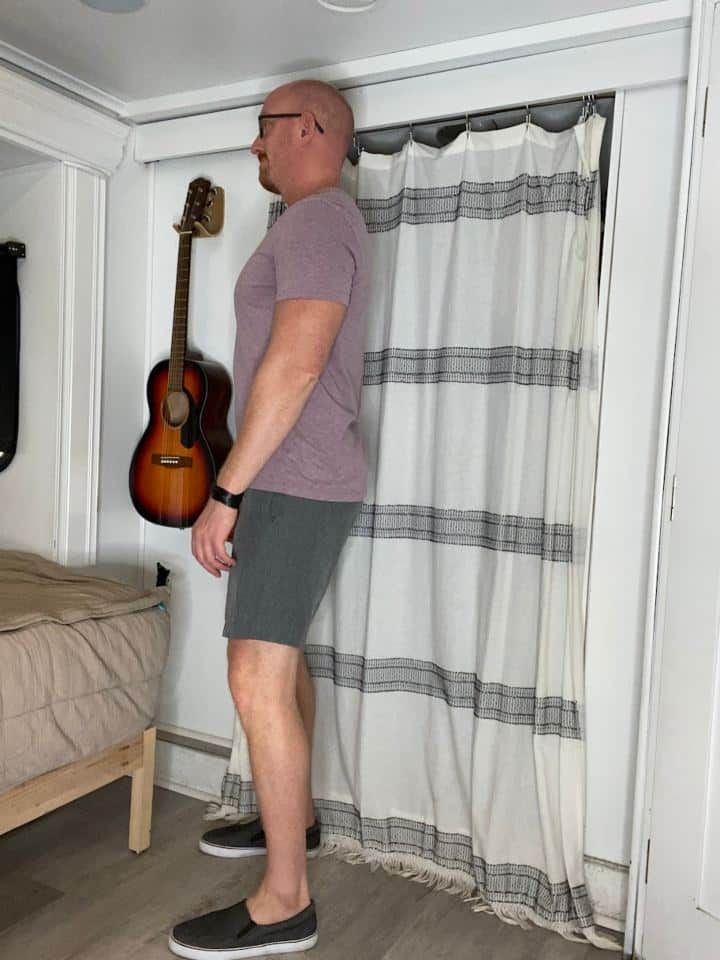
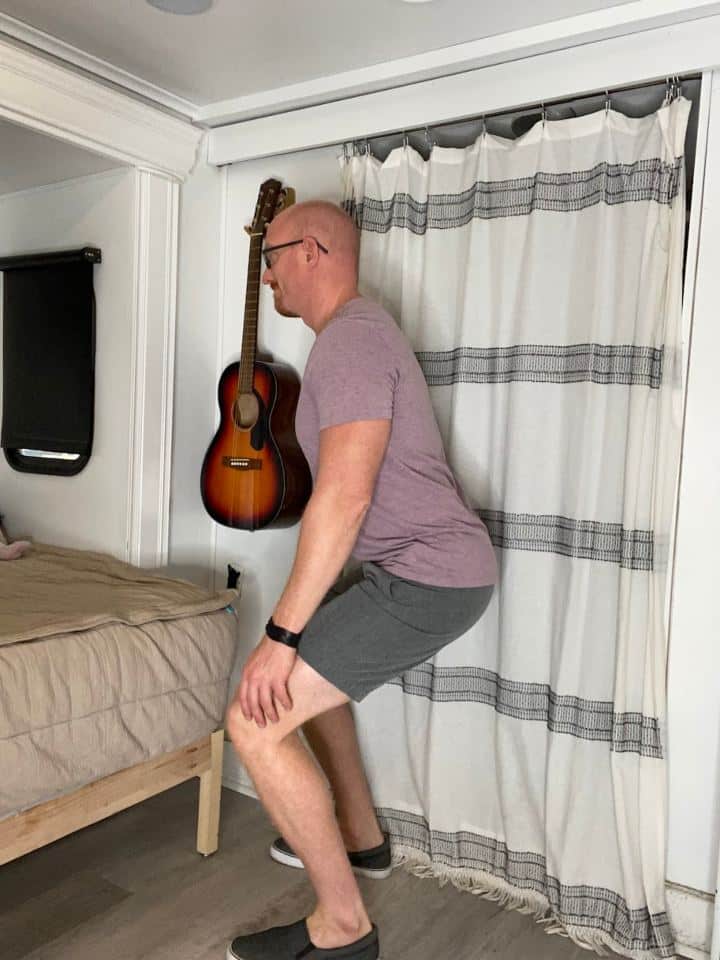
- Position the feet about hip-width apart for a proper squat, with the toes pointing forward.
- Slowly sit the hips back towards the heels as the knees bend. Your torso should hinge forward to counterbalance your hips, sitting back towards the heels.
- Bend the knees as far as you’re comfortable, hold for 2 seconds, then return to your starting position.
- Repeat 10x for 3 sets.
9. Lunge
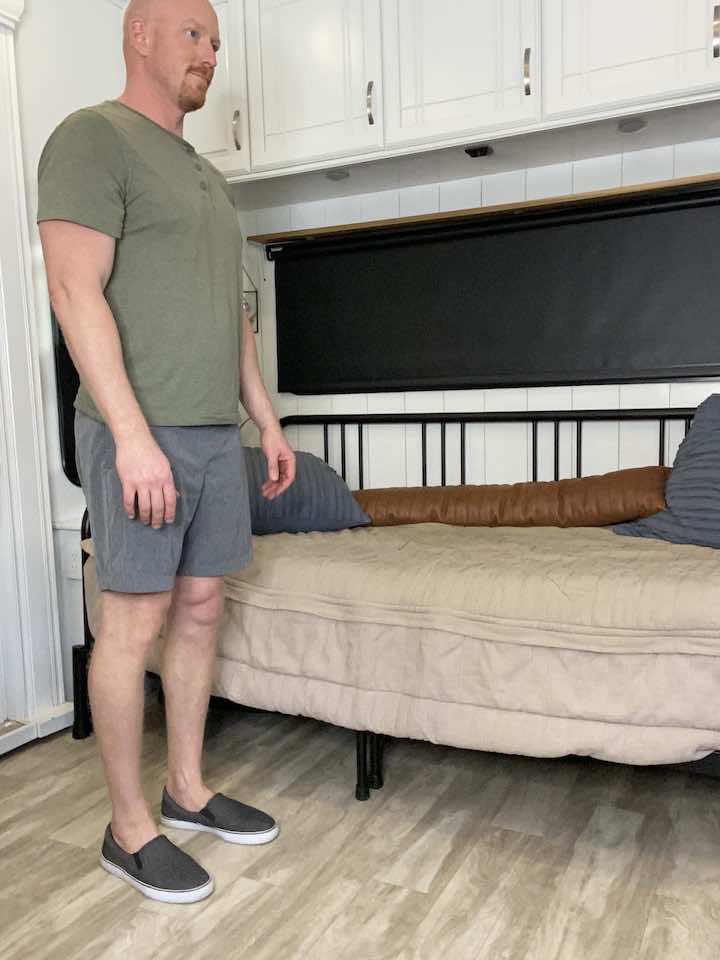
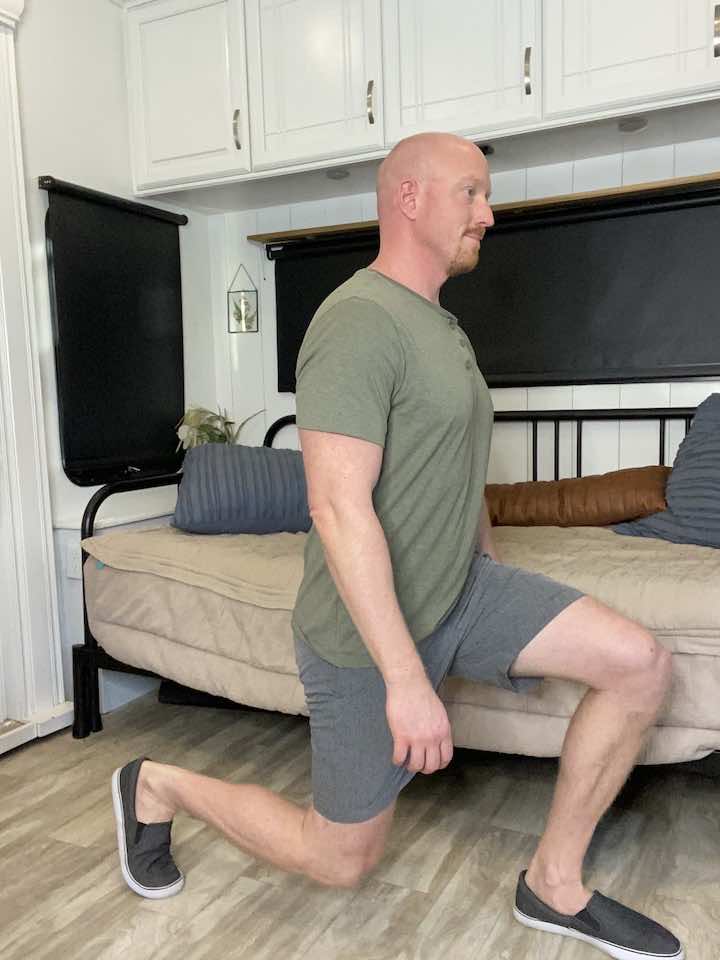
- First, stand with your feet hip-width apart and your arms at your sides.
- Step forward with one leg, dropping your back knee towards the floor as you bend both legs.
- Make sure to keep your front knee in line with your ankle and your weight on your heel.
- Make sure to keep your core and glutes tight.
- Push off your front heel to return to the starting position.
10. Step-ups


- Place the foot flat on the step using a single step about 4-6 inches high (if you don’t have a step, you can use a firm book as a substitute of equal height). Ensure the opposite leg is flat on the floor but close to the step.
- Ensure the knee and thigh are pointing straight forward. If you have handrails or can position the item you’re using next to your countertop for support, this can be helpful to hold on to.
- When ready, straighten the knee and squeeze the glutes to step all the way up on the step, then lower back down. You should end up in the same position you started in.
- Try to go up with a little more of a quick speed, but slow and controlled on the way back down.
- Repeat 10x for 2-3 sets.
Care Tips for Healthy Knees
Maintaining knee health doesn’t stop at exercises. Here are additional care tips to ensure your knees stay healthy:
- Stay Active: Regular activity keeps the muscles around your knees strong.
- Maintain a Healthy Weight: Less weight means less stress on your knees.
- Wear Supportive Footwear: Proper shoes can reduce knee strain.
- Warm Up Before Exercise: Prepare your knees for physical activity.
- Listen to Your Body: Avoid pushing through knee pain.
Incorporating these care tips, along with the exercises, can lead to healthier, stronger knees. Remember, consistency is key. Regularly performing these exercises, combined with following care tips, can lead to lasting knee health and prevent future injuries.


